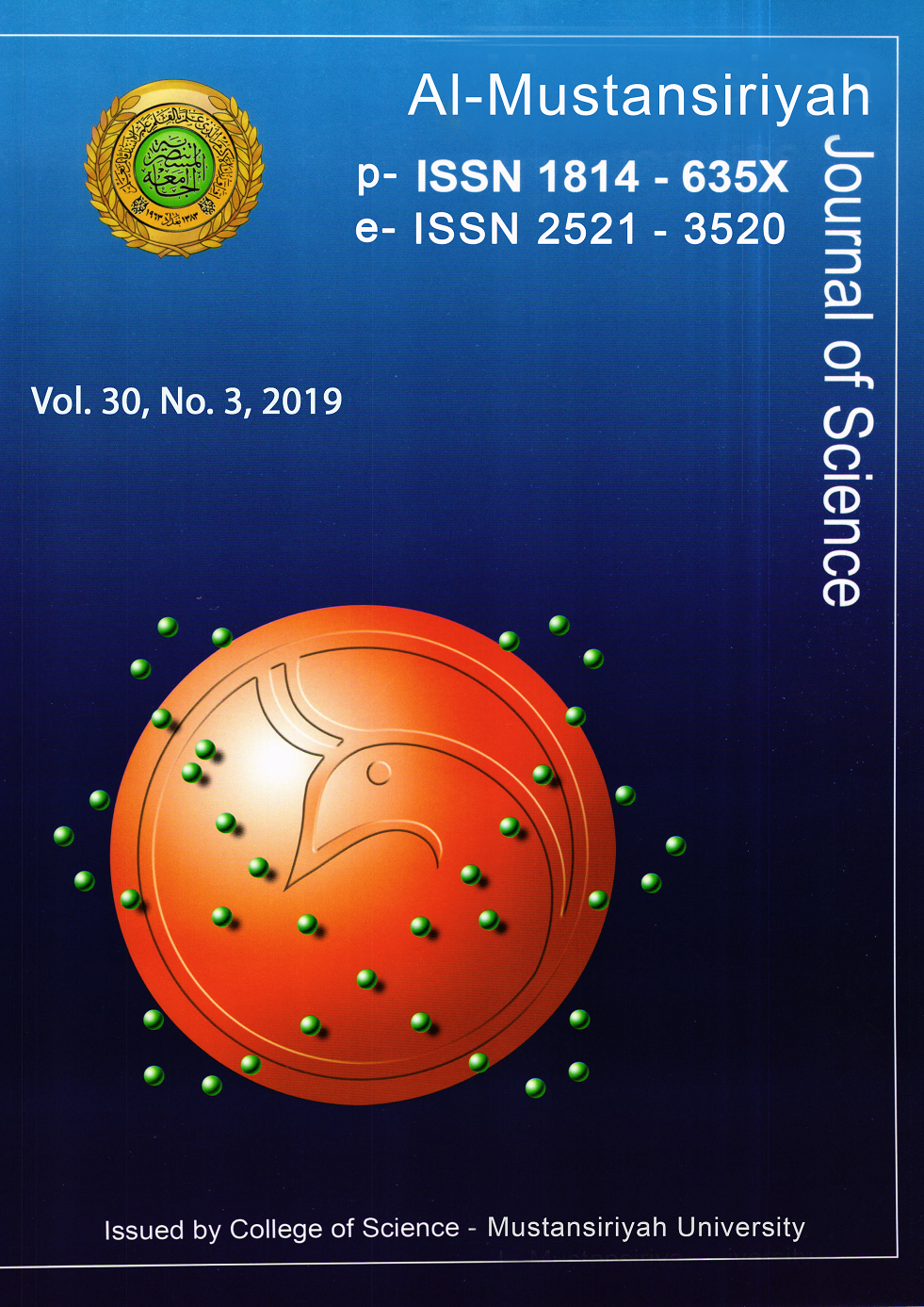Simulation Effect of Stability Classes on SO 2 Concentration in Daura Refinery and Neighboring Regions
DOI:
https://doi.org/10.23851/mjs.v30i3.611Keywords:
Effect of stability, SO 2 concentration, Gaussian Plume Model.Abstract
Sulfur dioxide (SO 2 ) is one of the most dangerous pollutants in the air. Most of the gas isemitted from industrial sources, mainly steam power plants, which account for more than 50%
of it. Its consider toxic gas that cause irritating respiratory effects in this study the effect of air
pollution around Durra refinery and its neighborhood. Where adopted in the study. the data of
gaseous pollutants in the air (sulfur dioxide) were analyzed in the area south of Baghdad at
January month that is have high frequent of stability condition . The data provided by the
Ministry of Oil / Baghdad for 2017. In addition, the effect of air stability classes on the
quantities of this pollutant. The results of the study showed that the in atmospheric stability
class (F) concentrations of sulfur oxides is (54442mg/m 3 ) at distance 100m and (5127 mg/m 3 )
at distance 10000m were the highest in the region. Overall results show that the concentration
rates reached relatively high values during the stable and very stable atmospheric stability and
that the values for the month of January for sulfur dioxide were found to be high and are
inversely proportional to the speed of the wind.
Downloads
References
Wikipedia, the free encyclopedia, "Air Pollution".
[Online].
Fliu, David H., 1997, "Environmental Engineers Handbook", (2ed Edition) , CRC press
Shaaban Mohamed Ali, (2001), "The Environmental Effects of Cement Cement Plant and its Treatment Method", Master of Science, University of Technology
Stern, A. C., (1977), “The Effects of Air Pollution”, Air pollution, Academic press, INC, vol II, Third edition, NewYork.
Waldbott, G.L, (1978), “Health Effects of Environmental Pollution” Mosby Company, U.S.A.
Ministry of Oil/ Department of studies and research of the refinery and the year 2017 include burned fuel for all processes of production
Gerard Kiely; 1997, "Environmental Engineering", Irwin McGraw-Hill UK, p. 979
Aaron Daly and Paolo Zannetti, (2007), "An Introduction to Air Pollution –Definitions, Classifications, and History",
Milton R. Beychok Fundamentals Of Stack Gas Dispersion
Tarash, Araba Jamil 2001: Modeling the effects of some atmospheric factors on air pollutants - Master Thesis - Faculty of Science - Mustansiriyah University.
Senocak., Hengartner, N. W., Short, M. B., Daniel,%B. (2008). StochasticEventReconstruction Atmospheric Contaminant Dispersion Using Bayesian Inference Atmospheric&Environment 7718>7727.
[Crossref]
Sutton O. G., "A theory of eddy diffusion in the atmosphere", Proc. Roy. Soc. London, A, 135, 1932, pp.143-165.
[Crossref]
Seema Awasthia, Mukesh Khareb and Prashant Gargavac (2006), "General plume dispersion model (GPDM) for point source emission".
[Crossref]
Downloads
Key Dates
Published
Issue
Section
License
(Starting May 5, 2024) Authors retain copyright and grant the journal right of first publication with the work simultaneously licensed under a Creative Commons Attribution (CC-BY) 4.0 License that allows others to share the work with an acknowledgement of the work’s authorship and initial publication in this journal.






















